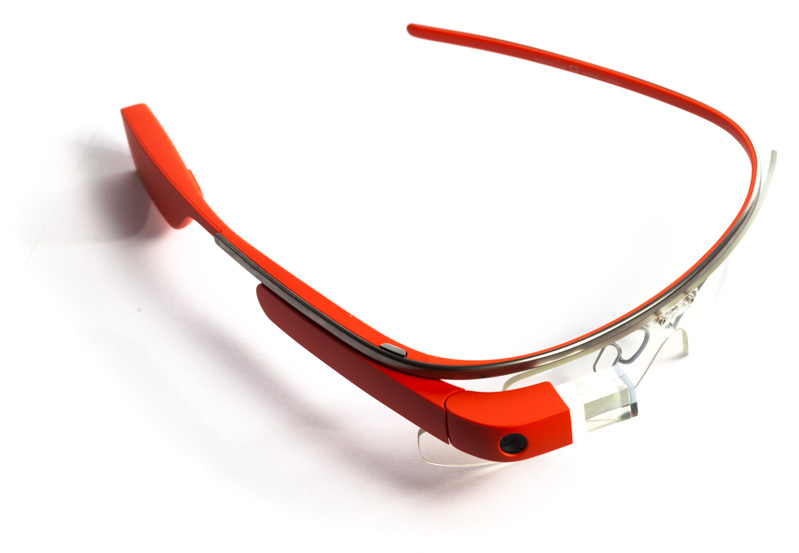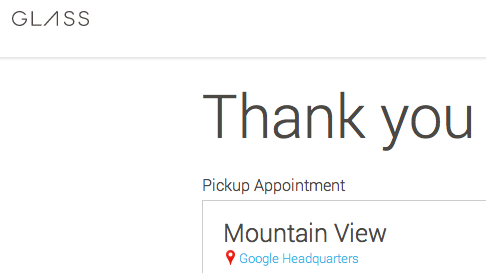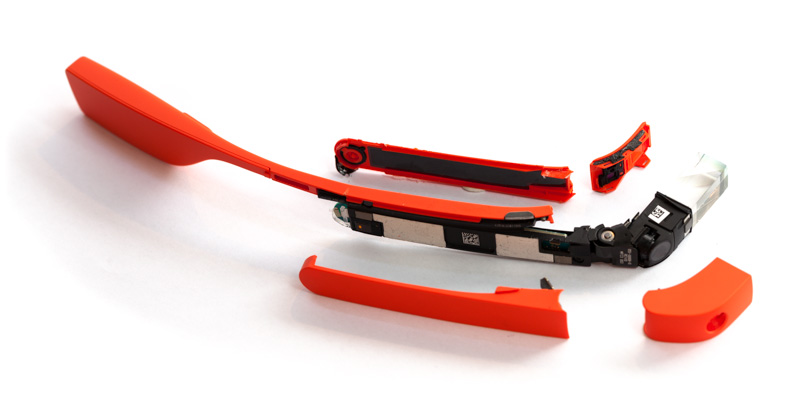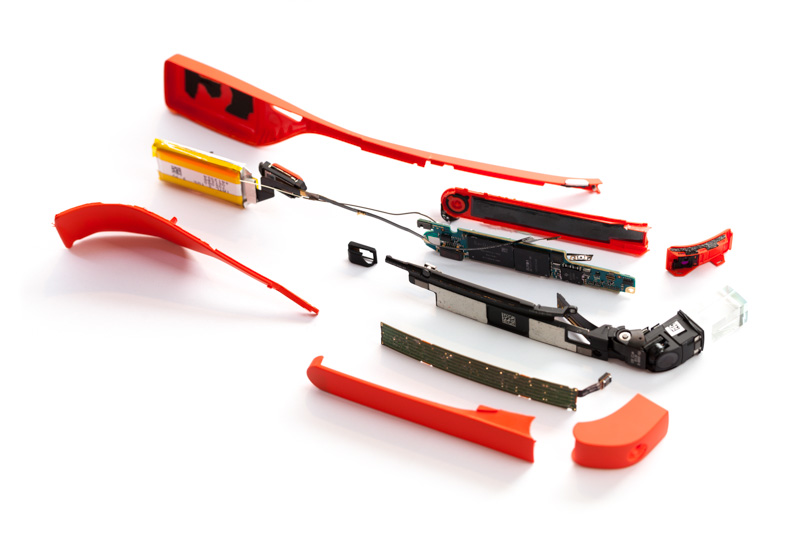Google's latest and hottest gadget needs little introduction. Since its public unveiling in April 2012, the tiny head-mounted Android computer has been collecting controversy and sociological analysis. It is currently available in limited beta to eminent members of the tech community and to a selection of "Glass Explorers". As members of the latter program, we are delighted to be able to explore Glass.
Growing up on a rich diet of dystopian tech fiction, we were filled with both intrigue and concern about Glass and decided to take our model apart to bring you a detailed view into the electronics guts of the device.
Gargoyles represent the embarrassing side of the Central Intelligence Corporation. Instead of using laptops, they wear their computers on their bodies, broken up into separate modules that hang on the waist, on the back, on the headset. They serve as human surveillance devices, recording everything that happens around them. Nothing looks stupider; these getups are the modern-day equivalent of the slide-rule scabbard or the calculator pouch on the belt, marking the user as belonging to a class that is at once above and far below human society.
—Snow Crash by Neal Stephenson
In light of recent events it is more important than ever to be aware and conscious of privacy implications of the technology we use. Glass is a touchpoint. We also live in an age when more and more of our technology is made inaccessible to the people who use it, to either understand, repair, or reuse, and other activities that one would normally associate with "ownership."

The Electronic Frontier Foundation fights for our rights online both in the worlds of privacy and for the rights of users to disassemble their hardware, and we suggest you make a $10 donation today for either or both of these reasons.

Once a Glass Explorer is invited to purchase Glass online, they must schedule an in-person pickup appointment at one of three "Glass Studios" in Mountain View, Los Angeles, or New York. At this appointment, a Google employee walks you through the setup and usage of your Glass unit.

We arrived a little early for our appointment Sunday afternoon at the Mountain View google campus, and found a good sized group of people mingling on the lawn in front of Google's Glass building, most already wearing Glass units, setting a scene somewhere between a garden party and a camera-wielding press mob.
Inside, in a space called "The Garage", a temporary retail-showroom-like space had been set up with tables, stools, and mirror stands, where staff members walked Glass Explorers through the software features of their new face computers.

At the door, a friendly greeter took us into the Glass Studio, offered us mimosas, and showed us the device color selection wall. On this wall, explorers could choose between and try on the specturm of available color options, with models in Charcoal, Tangerine, Shale, Cotton, Sky.
Forty-five minutes of Glass user interface training followed, including setup, phone pairing, and linking google accounts. We were also shown how to re-bond Glass with another phone later, by resetting to factory settings from the Glass 'settings' pane.
Glass arrives in an attractive, easy-to-open box. A few included accessories are included:
The build quality is what you'd expect from a device that costs as much as a high-end laptop. Everything fits together precisely, and has a solid feel and great surface finish.
Our Glass tour guide also gave us access to the Mirror API, the platform on which "Glassware" apps are built.

We eagerly brought Glass back to the lab to begin the dissection. Speculation reigned: what if the entire body of Glass is potted with epoxy requiring strong solvents to access? Which part is the battery in? How hackable is this thing? Where are the sensors? Any extra hardware features yet to be unlocked by future software updates? But first, where to even begin opening it?
With no idea of what lay ahead, we started by removing the titanium frame from the pod that holds all the good stuff.
Please Note: Much of the disassembly ahead was specialized, and required a certain precision in dexterity to pull off. That said, if you're careful and familiar with disassembling consumer products, Glass did not seem to present any major lurking hazards of inadvertent disassembly damage to components. As a testament to this, we were able to reassemble Glass after this teardown and it still operated perfectly, albeit with cosmetic damage.
The initial entry point into the Glass enclosure is a single Torx T5 screw. This screw removes the "pod" from the main titanium frame, and is likely intended to be user-serviceable. We detached the frame and set it aside. Removing this screw also enabled us to read the Glass unit's serial number, tucked against a black surface behind the frame.
Officially, Glass isn't currently compatible with prescription glasses, although plans are in the work to support them. However, as a random experiment, we tried simply attaching the Glass "pod" to a pair of prescription frames.
Although functional, the experience was subpar, because the head proximity sensor was very unreliable when next to a lens.
First we pried off the plastic casings around the display, located just next to the main prism.
This exposed the proximity sensor and what appears to be an ambient light sensor.
At this point we saw no obvious means for removing more plastic. We carefully prodded with spudgers and screwdrivers, but ultimately found an internal screw that was difficult to remove non-destructively. We applied force and leverage, cut a bit around the internal screw, and peeled back the outer shell. We then removed the now-exposed internal screw.
Removing the casing exposed a few parts, including the separate touchpad module on the right side of the unit. When a Glass users looks like they are pensively tapping their temple, they are interacting with this sensor. The touchpad is a full custom module made by Synaptics, and is driven by a Synaptics T1320A touchpad controller.
The main logic board was now exposed. The inwards-facing side holds an RF module, some small connectors and support ICs, and copper noting that this is "a GOOGLE [X] production".
This board was stuck to a thermal pad with lots of paste. After removing it and cleaning off the pink thermal compound, we revealed the core chips powering Glass: a TI OMAP4430, 16GB of SanDisk flash, an Elpida mobile DRAM chip. This board also holds RF devices, including a SiRFstarIV GSD4e GPS engine and an Bluetooth/WiFi module marked as WM-BN-BM-04-a and a data matrix which decodes to "85015340010112111400118159". A flex PCB and an RF cable, anchored with some metal tabs and a U.FL connector, trailed from this board to the behind-the-ear pod.
Some text in the copper on this board reads >9K! It's over 9000!
To keep the unit's weight distributed more evenly, Glass keeps its battery in a rounded bit behind the wearer's ear. We stripped this area open, again applying destructive force to tear the plastic.
The single-cell Lithium Polymer battery sits at the end of the flexprint PCB and is marked as having a capacity of 2.1 Wh (roughly 570 mAh). It is not user-replaceable, not even a little bit.
Just forward of the battery pod is a bone conduction speaker, which seems to double as a tactile switch.
Another flex PCB, this one much more intricate, connects the main logic board to an assembly containing the display, camera, and some other sensors. It wraps around and through the frame holding those components. We gently pulled it off its connectors and extricated it.
The flexprint PCB holds Glass' inertial sensor, an InvenSense MPU-9150. Also included is what seems to be a Wolfson WM7231 MEMS microphone. There is an additional identical chip on the main logic board, suggesting that Glass may use a dual microphone noise-cancellation system.
The Glass display is very small. It is adhered to the inside of the internal frame with light glue around the edge of the display board. We scraped off the glue with a dental pick and removed the board.
For scale, it is shown pictured on top of a US dime. With a native resolution of 640x360, the pixels are roughly 1/8th the physical width of those on the iPhone 5's retina display.
Glass uses a folded light pathway consisting of only a small handful of optical elements. Collectively they make the display's image appear to float a few feet from your face, in the top right corner of your vision. Steve Mann expands upon these optical strategies in much more detail and describes some additional challenges.
In the final photo, you can see this optical pathway at work when the display is removed.
The Glass camera seems to be of typical smartphone-level size and format. It is not coaxially aligned with the wearer's eye. The camera and display appear to talk to the CPU independently, with no direct connection between each other.
We took some sample photos through Glass.


Special thanks to Sparkfun for sponsoring this teardown and supporting electronics education everywhere.
The images in this collection are licensed Creative Commons BY NC SA 3.0. That means you are welcome and encouraged to use them for free for non-commercial purposes, provided you credit this page and the authors: Scott Torborg and Star Simpson.
If you are interested in licensing images for any commercial use, please contact us.